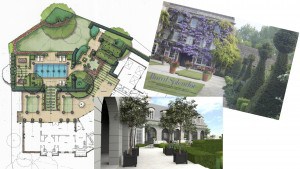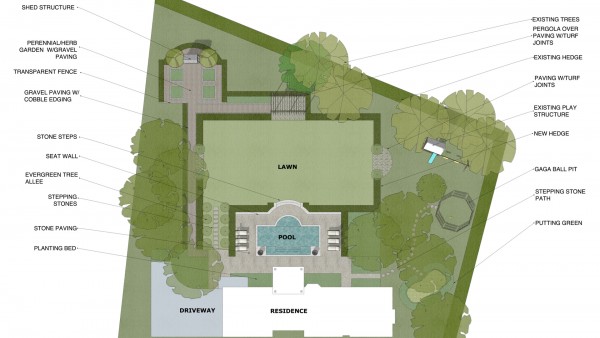Hello Readers! Welcome back for part 2 of our journey into working with a landscape designer. Once again, I sat down with Matthew Murrey, principal and lead designer at Matthew Murrey Design to discuss the Conceptual Design Phase of the project.
In part 1 of our series on Working with a Landscape Designer we discussed The Initial Design Meeting. If you missed part 1, you can check that out here.
Q: Matthew, please explain the conceptual design phase for our readers.
A: The conceptual design phase is where we begin the actual design process. This is where we figure out the form, layout and the spatial relationships for the project. During this phase, we begin to identify the planting areas, paving areas, pools, fountains, building footprints, etc.

Q: What deliverables should the client expect to see during this phase?
A: Typically this consists of line drawings, photographic representations and (sometimes) 3d modeling images.
Q: How long does this take?
A: The conceptual design phase takes can vary based on the amount of iterations, revision, and overall scope and complexity of the project. However, we typically see 3 major iterations on most projects. Matthew Murrey Design provides its clients with a schedule at the beginning of the project to set an expectation of how long this process should take.
Q: What is the client’s role during this phase?
A: The client’s role in the Conceptual Design Phase is to provide feedback.
Look at the data presented by the designer and give HONEST feedback—what are the things you like, what are the things you do not like? Does this function the way your family needs it to? Does the design contain the features you wanted? The more direct and honest the feedback, the better the end result and the smoother the process. Failure to give this feedback on the front end usually extends the completion of the project and can also create the need for additional design costs.
Q: Are there any tips for helping to make this phase as smooth as possible?
A: When we have a client that is not enjoying the experience (yes….it happens) it is usually because the lines of communication have been misguided or broken. Expectations may not have been clearly set or clearly followed; budget was unknown, irrelevant or improperly assessed; significant changes were made late in the landscape design process causing deadlines to be missed and costs to be assessed; Here are some communication pointers to avoiding these issues
- You can never provide too much information to your landscape designer. Whether you think the information is good / bad, critical, opinionated, or irrelevant, go ahead and throw it out there. Allow the designer to take the information, organize it, and put it to work.
- Allocate time to plenty of time to review the plan with your landscape designer and gain a clear understanding of what is being presented. Don’t expect to take in the information of a multi-acre site plan in a one hour meeting.
- There are no stupid questions, so do not be afraid to ask.
- Provide open, honest, clear, and concise feedback. Let the designer know exactly how you feel.
Q: What’s next?
A: As we finish concept design, we will go in and create an opinion of probable cost. This will help us to begin to identify the budget parameters around the project.


One thought on “Working with a Landscape Designer – The Conceptual Design Phase”